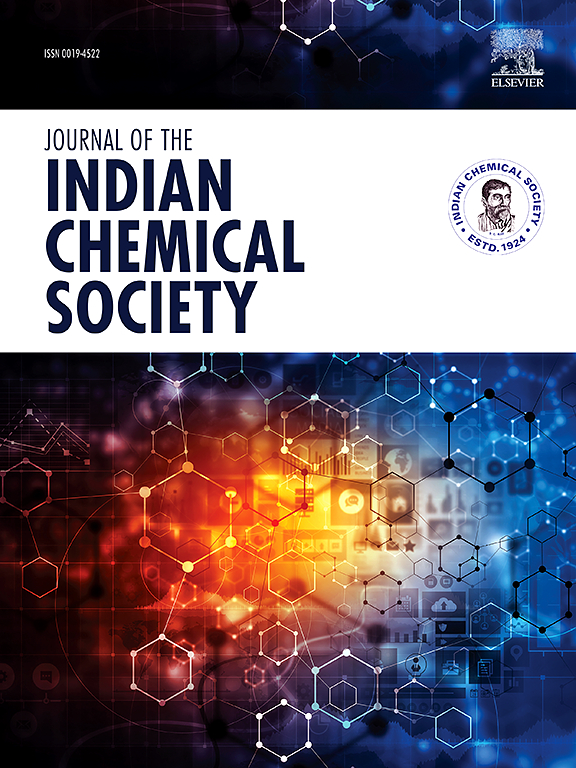Theoretical investigations, DNA, BSA interactions and cytotoxicity studies of Schiff's base nickel (II) complexes
IF 3.2
4区 化学
Q2 CHEMISTRY, MULTIDISCIPLINARY
引用次数: 0
Abstract
In the current study, we have designed the fluoro (H2L1) and nitro (H2L2) substituted Schiff base ligands and the corresponding nickel complexes (NiL1 and NiL2). The structures are optimized using DFT studies and the quantum-chemical parameters are calculated by applying the B3LYP/6-311G(d, p)/LanL2DZ ECP method. The molecular stabilities and bond strengths are assessed based on Natural bond orbital (NBO) analysis. Non-linear optical properties are studied using the hyperpolarizability (ε), dipole moment, and polarizability (α) values. The intermolecular interactions of the compounds are studied using the Atoms in Molecules (AIM) method. The binding propensity of the complexes with DNA and BSA are assessed. From the DNA studies, it has been observed that NiL1 shows a higher binding constant (Kb = 9.35 × 105 M−1) and Stern-Volmer quenching constant (KSV = 9.1 × 103 M−1) than NiL2. The complexes also show a strong binding affinity for BSA, with NiL2 showing higher KSV than NiL1. Molecular docking studies further support the studies. The cell-death assay, carried out on normal and HepG2 cell lines, demonstrates a higher cytotoxic effect for NiL1 than NiL2 and shows selectivity only towards cancer cells. The drug-likeness of the compounds is confirmed by ADMET studies.
希夫碱镍(II)配合物的理论研究、DNA、BSA相互作用和细胞毒性研究
在本研究中,我们设计了氟(H2L1)和硝基(H2L2)取代的希夫碱配体以及相应的镍配合物(NiL1和NiL2)。采用DFT方法对结构进行了优化,并采用B3LYP/6-311G(d, p)/LanL2DZ ECP方法计算了量子化学参数。基于自然键轨道(NBO)分析评价了其分子稳定性和键强度。利用超极化率(ε)、偶极矩和极化率(α)值研究了非线性光学性质。用分子中原子(AIM)方法研究了化合物的分子间相互作用。评估了配合物与DNA和牛血清蛋白的结合倾向。从DNA研究中发现,NiL1比NiL2具有更高的结合常数(Kb = 9.35 × 105 M−1)和Stern-Volmer猝灭常数(KSV = 9.1 × 103 M−1)。这些配合物对BSA也表现出很强的结合亲和力,其中NiL2的KSV高于NiL1。分子对接研究进一步支持了这些研究。在正常和HepG2细胞系上进行的细胞死亡试验表明,NiL1比NiL2具有更高的细胞毒性作用,并且仅对癌细胞具有选择性。ADMET研究证实了化合物的药物相似性。
本文章由计算机程序翻译,如有差异,请以英文原文为准。
求助全文
约1分钟内获得全文
求助全文
来源期刊
CiteScore
3.50
自引率
7.70%
发文量
492
审稿时长
3-8 weeks
期刊介绍:
The Journal of the Indian Chemical Society publishes original, fundamental, theorical, experimental research work of highest quality in all areas of chemistry, biochemistry, medicinal chemistry, electrochemistry, agrochemistry, chemical engineering and technology, food chemistry, environmental chemistry, etc.

 求助内容:
求助内容: 应助结果提醒方式:
应助结果提醒方式:


